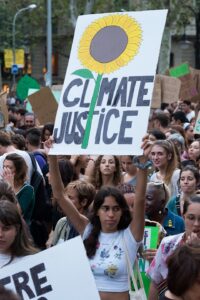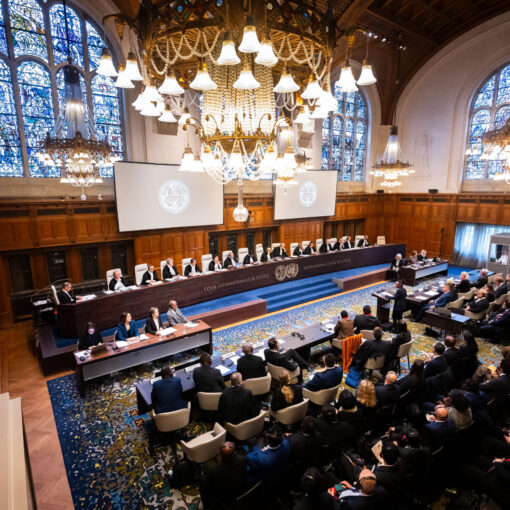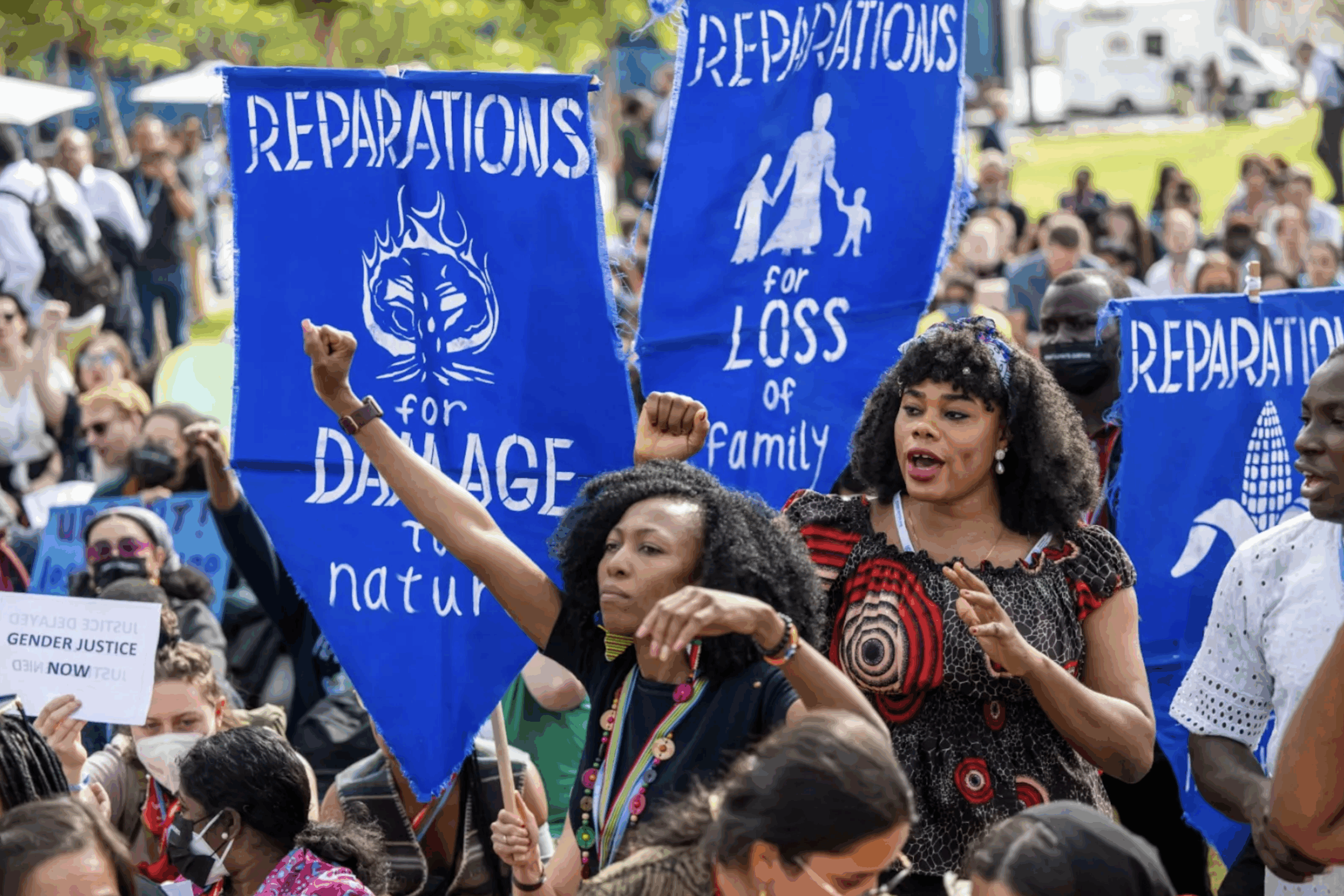This post is part of a new Climate Law Blog series, 100 Days of Trump 2.0, in which the Sabin Center offers reflections on the first hundred days of President Trump’s second term across a variety of climate-related topics. To read other posts from the series, click here.
The first hundred days of President Trump’s second term brought on a coordinated, sweeping, and devastating campaign against federal efforts to advance environmental and climate justice. The administration launched this campaign on its very first day through an onslaught of executive orders. Additional actions to advance and implement the White House’s directives have been unfolding since. This blog post provides an overview of the actions taken so far to undermine, attack, or terminate environmental and climate justice initiatives.
To begin, on January 20, 2025, President Trump issued Executive Order 14148, Initial Rescissions of Harmful Executive Orders and Actions. In this single order, President Trump rescinded seventy-eight executive orders issued by President Biden, sweeping away at least ten that pertained to climate and the environment, justice and equity, health, and more. Among the rescinded orders was Executive Order 14008, Tackling the Climate Crisis at Home and Abroad, issued by President Biden on February 1, 2021. Among other things, Executive Order 14008 established the White House Environmental Justice Advisory Council and created the Justice40 initiative, which required 40 percent of the benefits of climate and clean energy investments to flow to disadvantaged communities.
Also on January 20, 2025, President Trump issued Executive Order 14151, Ending Radical and Wasteful Government DEI Programs and Preferencing, which directed agencies to terminate all environmental justice offices, positions, programs, and activities within sixty days. It also requested that agencies take steps that could lay the groundwork for terminating federal funding awards for environmental justice-related work.
In addition to rescinding Biden-era executive orders, President Trump reached back all the way to the Clinton presidency to rescind a decades-old environmental justice executive order from 1994. Under the orders issued in President Trump’s first days in office, federal agencies have taken steps to implement the White House’s broad anti-environmental and climate justice priorities.
This blog post focuses on the attacks that target environmental and climate justice specifically, but other Trump administration actions also have important justice implications. For example, the Trump administration has waged a parallel campaign against diversity, equity, and inclusion initiatives, which relate closely to environmental justice initiatives. The 100 Days of Trump 2.0 blog series covers a number of other climate-related actions that the Trump administration has taken which, although not direct attacks on climate justice, can have a similar effect. For example, this post on the Inflation Reduction Act (IRA) covers the administration’s freeze of all IRA funding. Of the IRA’s many climate-related provisions, twenty-eight expressly refer to environmental justice considerations, and many more advance environmental and climate justice indirectly. The IRA funding freeze is, therefore, also a blow to equity and justice.
Attacks on Federal Funding Awards, and Other Policy Changes
In its first one hundred days, the administration has sought to prevent the use of federal dollars to support environmental and climate justice efforts. As we have seen in other areas of climate deregulation, interference with federal funding (through funding freezes and award terminations) has been a key tactic used by this administration so far. That trend holds true in the environmental and climate justice context as well. We have seen agencies (1) seek to freeze or terminate previous funding awards and (2) put in place measures that will ensure future awards will not support environmental and climate justice work.
On the first point, some examples of the administration’s interference with previous federal funding awards include:
- EPA’s termination of Clean Communities Investment Accelerator grants, which support financial and technical assistance for low-carbon technologies and greenhouse gas emission reduction activities in low-income and disadvantaged communities. This action has been challenged in court.
- EPA’s termination of grants made through the Thriving Communities Grantmaking Program, which is an environmental and climate justice block grant program. This action has been challenged in court.
- EPA’s planned termination of all environmental justice grants awarded under President Biden.
- The Department of Energy’s (DOE) memorandum to all recipients of DOE funding, directing an immediate halt of work (1) relating to diversity, equity, and inclusion programs or activities, (2) covered by community benefit agreements, or (3) guided by Justice40 requirements, conditions, or principles. DOE is now renegotiating the award agreements to remove references to those activities.
- The Department of Housing and Urban Development’s (HUD) pause of the Green and Resilient Retrofit Program, which provides loans and grants that will fund energy efficiency and climate resilience improvements in hundreds of low-income homes.
- The administration’s freeze of funding for home energy rebate programs that serve low- and moderate-income households. This freeze in turn has led states implementing the rebates to pause their programs (e.g., in Arizona and California).
Agencies have also taken steps to ensure that projects advancing climate and environmental justice goals will not receive federal funding in the future. For example, the Department of Transportation (DOT) rescinded guidance issued under the Biden administration about spending under the Infrastructure Investment and Jobs Act, which encouraged states to consider infrastructure projects’ climate and environmental justice impacts. At EPA, agency employees have provided grant recipients with a “list of words to avoid” in grant documents, including “disadvantaged,” “predominantly Black neighborhood,” “greenhouse gas,” “gentrification,” and more.
Beyond funding-related attacks, the administration’s policy on environmental and climate justice has led to the discontinuation of litigation that the federal government brought under President Biden. For example, the Trump administration has agreed to drop a critical environmental justice case against the petrochemical company Denka for carcinogenic air pollution from its plants in Louisiana’s “Cancer Alley.”
Administrative Changes to Undermine or Defeat Justice Initiatives
Another large portion of the second Trump administration’s actions against environmental and climate justice has been administrative in nature. These actions have included, among other things, staffing changes, program or office closures, and changes to agency websites, all of which undermine, or in some cases, completely eliminate previous justice initiatives. Even though these measures are internal to the government, they also harm the communities and organizations that rely on public federal resources to further their own environmental and climate justice work.
EPA’s actions have been particularly numerous and newsworthy. For example, in early February, EPA “put 168 employees within its environmental justice office on administrative leave.” In March, EPA Administrator Lee Zeldin announced plans to terminate the agency’s environmental justice offices.
Further, EPA and other agencies have been removing environmental and climate justice content from their websites. Four non-profit organizations brought a lawsuit against EPA, the Council on Environmental Quality, the Federal Emergency Management Agency, DOE, and DOT to challenge these removals in Sierra Club v. EPA. The plaintiffs note, “[w]ithout these webpages, Plaintiffs are impeded in their ability to understand, explain, or seek to remedy the injustices faced by communities disproportionately affected by climate change, pollution, and other environmental harms.”
In anticipation of this eventuality, numerous organizations also undertook archiving efforts to preserve federal data and online resources and continue to make them accessible. For example, the Public Environmental Data Partners coalition archived the Climate and Economic Justice Screening Tool and the EPA Environmental Quality Index prior to the administration change.
The Fight for Justice Marches On
Despite President Trump’s best efforts, the fight for environmental and climate justice continues to move forward. Although the rapid unwinding of progress made under the last administration (and even those before it) is disheartening, historically, the true work of advancing justice has come directly from communities and local initiatives. Here, we highlight some of the ways in which progress continues to advance.
First: parties are fighting back against the Trump administration’s actions in court. As noted above, non-profit organizations have sued multiple federal agencies for removing environmental justice content from their websites in Sierra Club v. EPA. Recipients of federal funding have also sued the government for freezing and terminating awards that affect environmental and climate justice. In Climate United Fund v. Citibank, awardees are challenging the termination of their Clean Communities Investment Accelerator grants. In Green & Healthy Homes Initiative v. EPA, awardees of Thriving Communities Grantmaking Program grants are doing the same.
Second: some federal programs may survive because their benefits to communities, including many communities in red states, are undeniable. For example, the IRA’s Solar for All program is helping to bring clean, affordable energy to low-income communities across America. Solar for All was a victim of the Trump administration’s early funding freezes but reports suggest the funding for Solar for All is once again flowing, at least for the time being. It is too soon to tell what the fate of the Solar for All program will be. Challenges to the funding freeze are still working their way through the courts and EPA has announced an audit of the program, which has ominous implications. But it is notable that Solar for All and community solar seem to have garnered some favor with Republican Congressmembers. With at least some bipartisan support, there may be hope still for federal programs that deliver nation-wide benefits to low-income and burdened communities.
Third: positive environmental justice decisions are still coming down in the courts. For example, the Court of Appeals for the Fifth Circuit recently issued an opinion reversing a District Court decision that would have prevented an environmental justice lawsuit from moving forward. The lawsuit was brought by faith- and community-based organizations in a majority-Black district in Louisiana’s “Cancer Alley” to prevent the construction and expansion of petrochemical plants in their area. The Court of Appeals held that the District Court had erred in dismissing the plaintiffs’ claims and remanded the lawsuit to the District Court to move forward.
Finally, and most importantly: community organizers, local governments, and states are staying in the fight for environmental and climate justice. To name just a few examples:
- As the federal government seeks to weaken environmental review (see, e.g., here and here), several states have enacted cumulative impact laws which bolster environmental review to account for the cumulative health, environmental, and pollution burdens in disadvantaged communities when siting new projects. Similar initiatives are also moving forward at the local level.
- Local organizations continue to mobilize to protect the health and wellbeing of disadvantaged communities and communities of color. For example, WE ACT for Environmental Justice, in partnership with the Sabin Center, released a resource to support interested communities in drafting and negotiating community benefit agreements, even in the face of the Trump administration’s hostility towards such agreements. The Sabin Center also maintains a database of community benefit agreements for reference.
- While the Trump administration pushes its fossil fuel agenda with no regard for inequities in access to energy, or the threats that climate change poses to our grid, community organizations and state governments work towards energy justice with climate-durable solutions.
If the first hundred days of President Trump’s second term, not to mention the entirety of his first term, are any indication, the coming years will be a struggle to ensure equitable protection from environmental and climate harms. But the administration cannot simply brush away considerations of equity and justice that are embedded in statutes and regulations, nor can it impose sweeping administrative changes in an arbitrary and capricious manner. Such actions have been, and more likely will be, challenged in court. In the meantime, local action will continue to advance environmental, climate, and energy justice.
Olivia Guarna is the Climate Justice Fellow at the Sabin Center for Climate Change Law at Columbia Law School.






